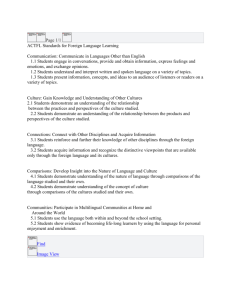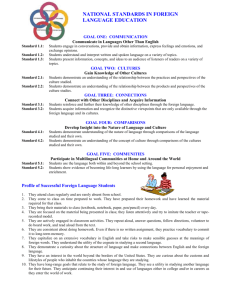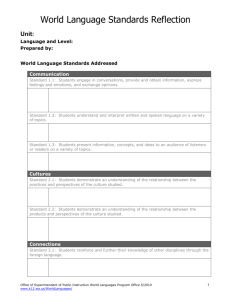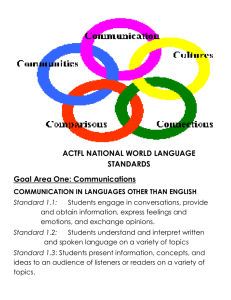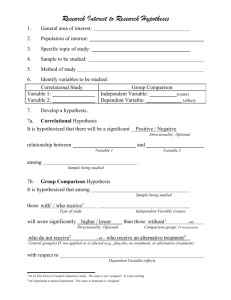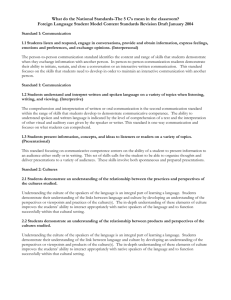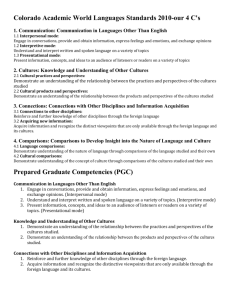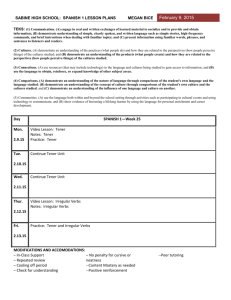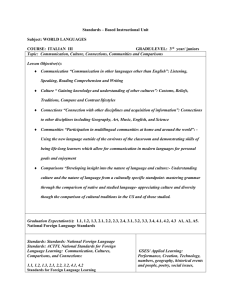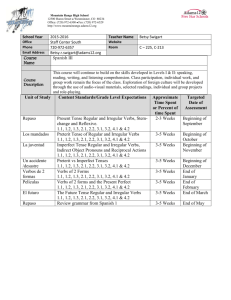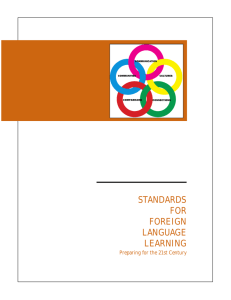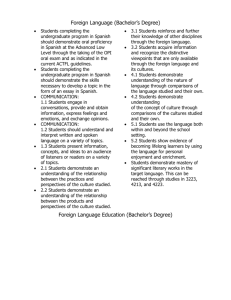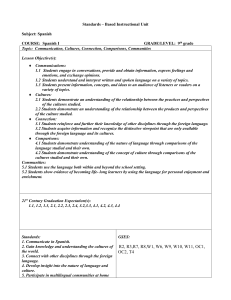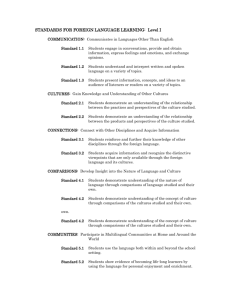Omaggio_19sep12
advertisement
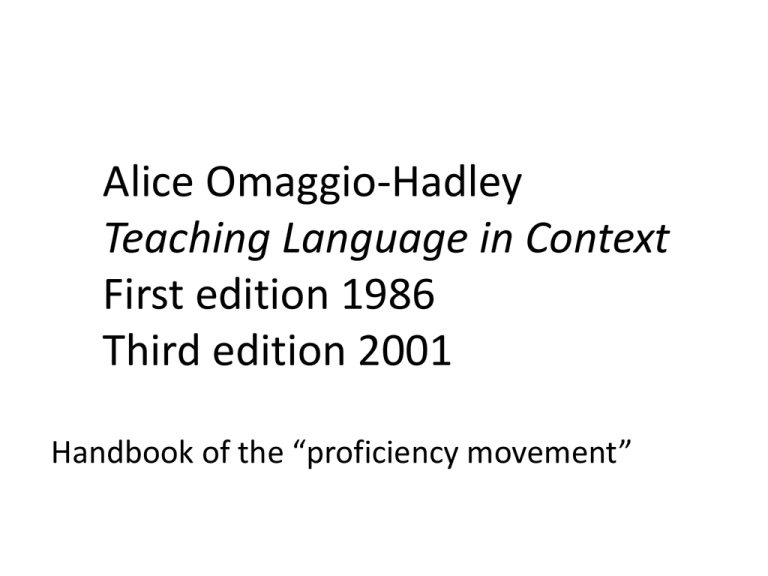
Alice Omaggio-Hadley Teaching Language in Context First edition 1986 Third edition 2001 Handbook of the “proficiency movement” Core: Set of five hypotheses Hypothesis 1: Opportunities must be provided for students to practice using language in a range of contexts likely to be encountered in the target culture. Corollary 1: Students should be encouraged to express their own meaning as early as possible after productive skills have been introduced in the course of instruction Corollary 2: Opportunities must be provided for active communicative interaction among students. Corollary 3: Creative language practice (as opposed to exclusively manipulative or convergent practice) must be encouraged in the proficiency-oriented classroom. Corollary 4: Authentic language practice should be used in instruction wherever possible. Hypothesis 2: Opportunities should be provided for students to practice carrying out a range of functions (tasks) likely to be necessary in dealing with others in the target culture. Hypothesis 3: The development of accuracy should be encouraged in proficiency-oriented instruction. As learners produce language, various forms of instruction and evaluative feedback can be useful in facilitating the progression of their skills toward more precise and coherent language use. Hypothesis 4: Instruction should be responsive to the affective as well as the cognitive needs of students, and their different personalities, preferences, and learning styles should be taken into account. Hypothesis 5: Cultural understanding must be promoted in various ways so that students are sensitive to other cultures and are prepared to live more harmoniously in the target-language community. Five Cs: Content standards What student should know and be able to do Originally intended for K-12 Political document: general goals of the profession Not a curriculum guide Not tied to instructional method Essential skills and knowledge to achieve language proficiency as life-long learners COMMUNICATION Communicate in languages other than English Students engage in conversations, provide and obtain information, express feelings and emotions, and exchange opinions. Students understand and interpret written and spoken language on a variety of topics. Students present information, concepts, and ideas to an audience of listeners or readers on a variety of topics. CULTURES Gain knowledge and understanding of other cultures Students demonstrate an understanding of the relationship between the practices and perspectives of the culture studied. Students demonstrate an understanding of the relationship between the products ofnd perspectives of the culture studied. CONNECTIONS Connect with other disciplines and acquire information Students reinforce and further their knowledge of other disciplines through foreign language. Students acquire information and recognize the distinctive viewpoints that are available only through the foreign language and its cultures. COMPARISONS Develop insight into the nature of language and culture Students demonstrate understanding of the nature of language through comparisons of the language studied and their own. Students demonstrate understanding of the concept of culture through comparisons of the cultures studied and their own. COMMUNITIES Participate in multilingual communities at home and around the world Students use the language both within and beyond the school setting. Students show evidence of becoming lifelong learners by using the language for personal enjoyment and enrichment.
